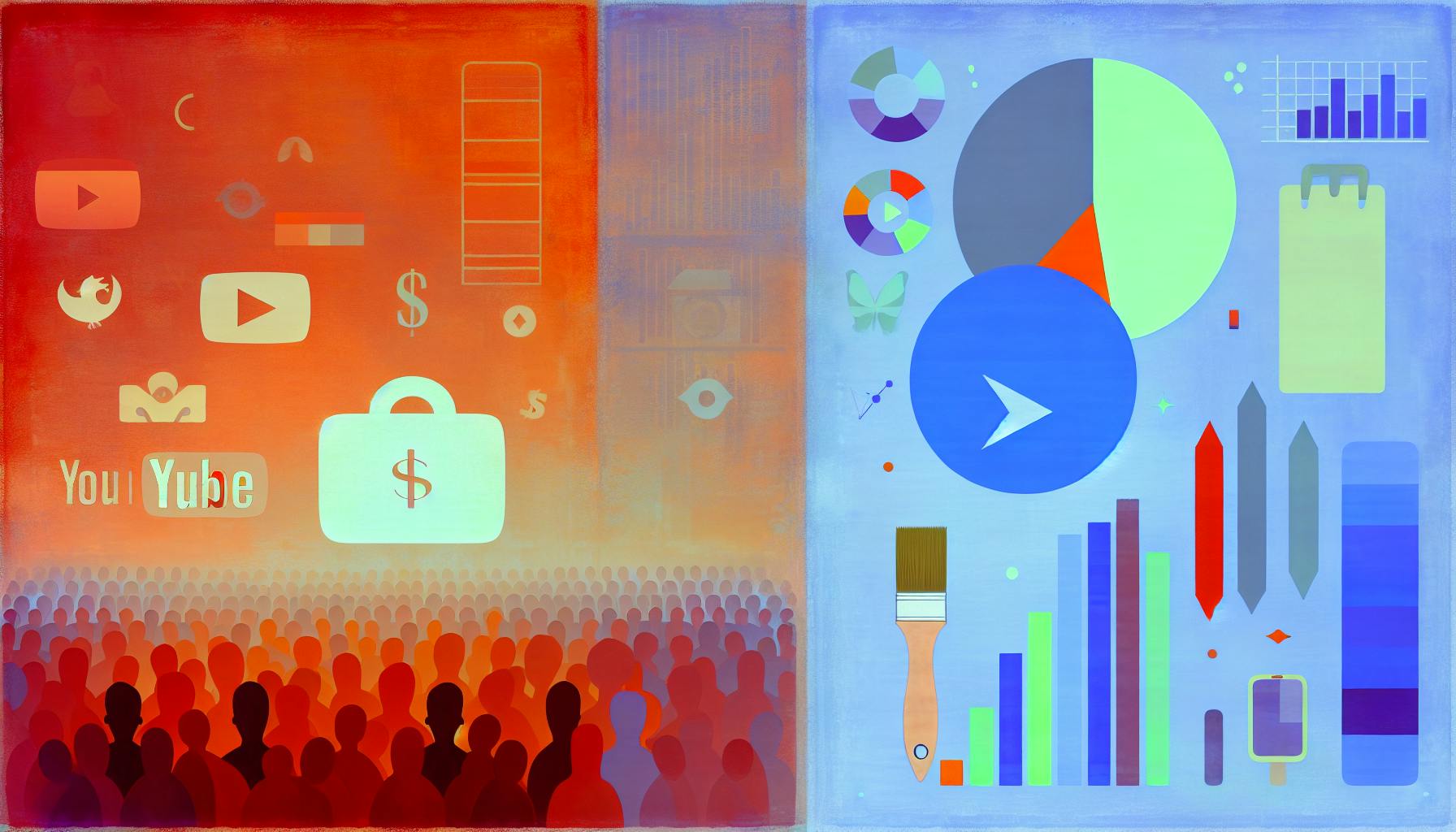A content calendar is a tool for planning and scheduling content across platforms. Here's how to create one:
- Review current content
- Set clear goals
- Choose content types
- Decide posting frequency
- Pick the right tools
- Plan topics
- Set up workflow
- Fill in calendar
- Check and update regularly
Key components:
- Publishing dates
- Content types
- Sharing platforms
- Themes and topics
- Team tasks
- Progress tracking
Benefits:
- Better organization
- Improved collaboration
- Efficient resource use
- Aligned marketing goals
Common mistakes to avoid:
- Ignoring old content
- Mixing monthly and weekly plans
- Using same content everywhere
- Not analyzing performance
- Being inflexible
| Tool | Best for |
|---|---|
| Google Sheets | Simple planning |
| Trello | Visual organization |
| Specialized software | Advanced features |
Start your content calendar today to improve your content marketing strategy.
Related video from YouTube
Advantages of Content Calendars
Content calendars offer many benefits that can improve your content creation process. Here are some key advantages:
Better Organization and Consistency
A content calendar helps you:
- Plan content ahead of time
- Publish regularly
- Avoid last-minute rush
- Align content with your goals
- Reduce errors and inconsistencies
This leads to a smoother content creation process.
Improved Team Collaboration
Content calendars help teams work better together by:
| Benefit | Description |
|---|---|
| Central planning | One place for all content plans |
| Task tracking | See who's doing what and when |
| Progress monitoring | Check how tasks are moving along |
| Better communication | Fewer misunderstandings |
These improvements help the team get more done.
Efficient Resource Use
With a content calendar, you can:
- Find gaps in your content
- Plan for busy times and events
- Use your time and money wisely
- Reach your audience at the right times
This helps you make the most of what you have.
Matching Marketing Goals
A content calendar ensures your content fits your marketing plan by:
- Creating content your audience wants
- Addressing customer needs
- Supporting your business aims
This focused approach leads to better results for your content marketing efforts.
Main Parts of a Good Content Calendar
A good content calendar helps you plan and manage your content well. Here are the key parts it should have:
Publishing Dates
Set clear dates for when to publish your content. This helps you:
- Post regularly
- Meet deadlines
- Keep your content on schedule
Content Types
List the kinds of content you'll make. This can include:
- Blog posts
- Videos
- Social media updates
- Podcasts
Mixing up your content types keeps things interesting for your audience.
Platforms for Sharing
Decide where you'll share each piece of content. Common platforms are:
| Platform | Examples |
|---|---|
| Social Media | Facebook, Twitter, Instagram |
| Websites | Your blog, guest posts |
| Newsletters, updates |
Knowing where to post helps you reach the right people.
Content Themes and Topics
Choose what you'll write or talk about. This helps you:
- Stay focused
- Meet your goals
- Give your audience useful information
Team Member Tasks
Assign jobs to your team. This can include:
- Writing
- Editing
- Posting content
Clear tasks help everyone know what to do.
Progress Tracking
Keep an eye on how your content is coming along. Use a simple system like:
| Status | Meaning |
|---|---|
| Not Started | Work hasn't begun |
| In Progress | Being worked on |
| Ready for Review | Needs checking |
| Published | Live and shared |
This helps you make sure everything gets done on time.
sbb-itb-bc761f5
How to Make Your Content Calendar
Here's a simple guide to create your content calendar:
Review Your Current Content
Look at what you've made before. See what works and what doesn't. This helps you plan better.
Set Content Goals
Choose clear goals that match your marketing plans. For example:
| Goal | Example |
|---|---|
| More website visits | Increase traffic by 20% |
| Get more leads | Get 100 new leads per month |
| Engage customers | Boost comments by 30% |
Choose Content Types
Pick content that your audience likes. This could be:
- Blog posts
- Videos
- Social media posts
- Podcasts
Decide How Often to Post
Make a schedule you can keep up with. Don't post too much or too little.
Pick the Right Tools
Choose tools that work well with what you already use. Some options are:
| Tool | Best for |
|---|---|
| Google Sheets | Simple planning |
| Trello | Visual organization |
| Special software | Advanced features |
Plan Your Topics
Think of ideas for your content. Include both timely and always-useful topics.
Set Up Your Work Process
Decide who does what. Make clear steps for checking and posting content.
Fill in Your Calendar
Put your ideas, due dates, and tasks in your calendar.
Check and Update Regularly
Keep an eye on how your content is doing. Change your plan if needed.
Tips for Using Your Content Calendar
Be Ready to Change
When making a content calendar, leave some room to change things. This helps you:
- React to new trends
- Cover sudden events
- Keep your content fresh
Being able to change your plan helps you make content people want to read.
Ask Your Team for Ideas
Get your team involved when planning. This helps everyone work better together. Ask them to:
- Share their thoughts
- Give feedback
- Help create content
Working together leads to better content ideas.
Keep It Current
Check and update your calendar often. This keeps it useful and tidy. Remember to:
- Take out old content
- Update due dates
- Change your plan if needed
Keeping your calendar up-to-date helps you stay on track with your goals.
| Tip | Why It's Important | How to Do It |
|---|---|---|
| Be Ready to Change | Keeps content relevant | Leave some open slots in your calendar |
| Ask Your Team for Ideas | Improves teamwork | Have regular planning meetings |
| Keep It Current | Ensures calendar stays useful | Set a weekly time to review and update |
Common Mistakes to Avoid
When making a content calendar, watch out for these common errors:
Not Reusing Good Old Content
Some content stays useful for a long time. Don't forget about it. Here's what to do:
- Find old content that people liked
- Check if it needs updating
- Share it again or make it into something new
This helps you get more from your best work.
Mixing Up Monthly and Weekly Plans
Keep your monthly and weekly plans separate. This stops mix-ups.
| Plan Type | What It's For |
|---|---|
| Monthly | Big themes and events |
| Weekly | Each post with exact times |
Forgetting Each Platform is Different
Don't use the same content everywhere. Each social media site is special.
| Platform | What Works Well |
|---|---|
| Longer posts, videos | |
| Short updates, news | |
| Photos, stories |
Make your content fit each place.
Not Looking at the Numbers
Check how your posts are doing. This shows you what people like.
| What to Check | Why It Matters |
|---|---|
| Likes | Shows if people enjoy your content |
| Shares | Tells you if people find it useful |
| Comments | Helps you understand what people think |
Use this info to make better posts.
Being Too Strict
Have a plan, but be ready to change it. Sometimes big news happens, and you need to post about it.
Wrap-Up
Key Takeaways
A content calendar helps you:
- Plan your content better
- Work well with your team
- Meet your marketing goals
To make a good content calendar:
- Set clear goals
- Pick the right tools
- Plan your topics ahead of time
Remember to:
- Be ready to change your plan
- Ask your team for ideas
- Keep your calendar up to date
Start Your Content Calendar
Now it's time to make your own content calendar. Here's what to do:
| Step | Action |
|---|---|
| 1 | Look at your current content |
| 2 | Set content goals |
| 3 | Choose your tools |
| 4 | Plan your topics |
| 5 | Make your calendar |
A good content calendar helps you:
- Make better content
- Post regularly
- Keep your audience interested
- Help your business grow
Start making your content calendar today to improve your content marketing.



